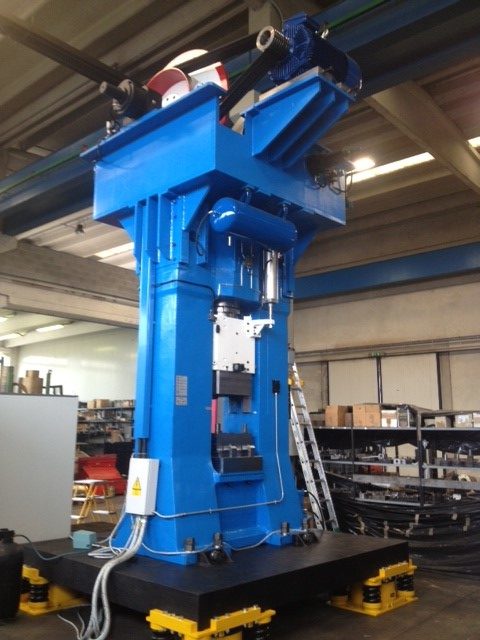In metal forging, metals such as brass, bronze, copper, and more are repeatedly compressed through different techniques to shape the metal. Manual or automated hammering, rolling, and pressing processes turn metal blanks into distinct forms and components.
There are a variety of different forging techniques: hot forging, warm forging, and cold forging. These techniques are classified by the temperature of the metal being forged. By using a wide range of temperatures and compressing techniques, forgers imbue the metals with different properties based on the needs of their particular application.
The Metal Forging Process
Metal forging processes involve shaping metal by directly applying compressive force through blows of a hammer or through a die. With hot and warm forging processes, metal is heated in a forge to make the metal softer or to change its crystalline structure.
To start the forging process, manufacturers first cut billets from lengths of a metal bar. The bars can be round, square, or a specialized shape. Once the billet is cut to the right length, forgers heat it to the necessary temperature for processing. Next, the billet is moved to the bottom forging die on a forging press. The press then quickly moves downward with the top die in place and slams down onto the metal. This high-pressure compresses, or squeezes, the metal into the shape demanded by the die cavity while also imparting strength to the part and refining its grain structure.
As the billet is squeezed between the two die pieces, excess material is squeezed out of the die cavities, or gutters. This excess material, called flash, is cut away from the forging prior to surface treatment and finishing processes.
There are many different types of metal forging processes available: closed die forging, open die forging, cold forging, roll forging, extrusion, and more. At Interstate Metal, we specialize in closed die forging processes.
Closed Die Forging
In closed die forging processes, the billet is entirely or partially enclosed by the two die halves during forging. This results in a strong, cost-effective product with an excellent surface condition. Not only is closed die forging cost-effective, but it can also be used to create high volumes of goods that are virtually identical and meet tight tolerance requirements.
Closed die forging processes can be used with virtually any metal and can create a wide variety of different shapes. It can also work with a wide range of sizes, from small and lightweight components to oversized multi-ton parts.
Forging Brass, Bronze, and Copper
Forgers can work with multiple different types of metals; each metal has different properties and reactions to forging processes. At Interstate Metal, we work primarily with brass, bronze, and copper. These three metals (along with their alloys) respond well to forging. Their advantageous characteristics include:
- High ductility
- Excellent machinability
- Non-magnetic and non-sparking attributes
- Excellent surface finish
- Attractive color
- Great plating and joining characteristics
Metal Forging vs. Metal Casting
Metal forging and metal casting processes are two popular options for metal forming. Metal forging offers several key advantages over casting, including:
- More strength
- The ability to correct defects in previously cast parts
- Cost-effectiveness and reliability
- Better response to heat treatment
- Can adapt to various production run lengths with shorter lead times
Request a Custom Metal Forging Quote From Interstate Metal
At Interstate Metal, we specialize in custom metal forging with closed forging processes. Contact us today to learn more about our processes and the metals we work with, or request a quote to start your custom metal forging project.

